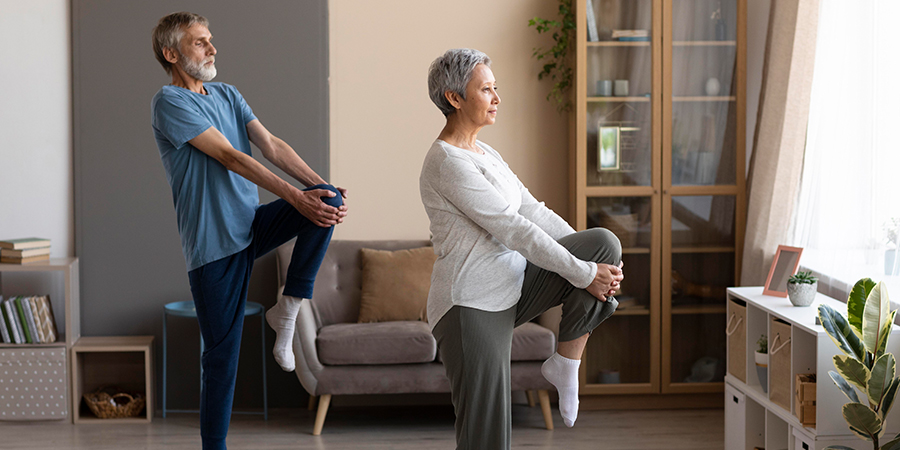As the years go by, it is inevitable that our body will age and therefore lose physical capacities. But combined with a sedentary lifestyle, ageing accelerates and reduces the quality of life. Active ageing is a commitment to health.
From the age of 60 onwards, health problems tend to worsen and for this reason, emphasis is placed on including an exercise routine in daily life.
These are not exercises to gain muscle, they are exercises to improve quality of life. Exercises that help to improve mobility, functionality, strength, balance, endurance, cardiovascular and respiratory capacity are recommended.
Depending on the age and ability of each person, different types of exercises will be needed. In today’s post, the exercises we are going to discuss below are focused on people with mobility and autonomy, and people with mobility difficulties.
Take them as a guide, each person should perform them according to their abilities. And although they are very simple, they are enough to keep the body active and reduce the deterioration of physical condition. What’s more, they can be done at home. Are you ready to start moving?
Exercises for active and autonomous ageing.
- Walking or cycling. Take a daily walk of about 30 minutes.
- Go up and down stairs. Make the most of going outside and if you are not carrying any weight, take the stairs instead of the lift.
- Extension of arms. Lateral, extend arms towards the floor and lift to shoulder height. Front, extend your arms towards the floor and lift by bending your elbows to shoulder height. If you can, do it with weight. You can use dumbbells, or a water bottle or packet of rice, for example.
- Wall push-ups. Put your hands on the wall and keep your arms extended. Then bend your elbows to bring your body closer to the wall and extend them again.
- Bridge to strengthen legs and gluteus. Lying down with your feet on the floor and your hands on the sides of your body, raise your lower back and buttocks off the floor. You don’t need to go up a lot, just a little and hold the position for a few seconds.
- Leg extension. Forward, leaning on a chair with one hand, raise one of your legs by bending your knee to hip height and put it back on the floor.
Backwards, leaning on a chair with one hand, bend the leg backwards, leaving the foot at the level of the buttock, and put it back on the floor.
Exercises for active ageing with mobility difficulties.
With the help of a family member or carer:
- Getting around the house.
- Getting in and out of a chair.
Sitting on a chair.
* The back should be as straight as possible and supported, and the soles of the feet should be flat on the floor with the knees bent.
- Swinging arms forwards and backwards.
- Extension of arms. Both laterally and to the front. As mentioned in the previous point, but without weight and seated.
- Leg extension. With the legs bent, stretch out one leg and bend it again. Then the other.
- Make circles with each leg. Lift one of your feet off the floor, and with your knee bent, make circles with your foot. Alternate standing.
- Squeeze a towel. Do it as if you wanted to wring out water.
- Open your arms in a cross and hug each other. First stretch your arms out at shoulder height, and then close them in the form of an embrace to yourself.
- Stretch your arms straight above your head. This can be done with both arms at the same time, or one at a time and alternating them.
You can do 8 to 15 repetitions of each of the exercises, alternating between the left and right sides. Do not force yourself or become tired. It will help if you control your breathing during each of the movements. It’s all about exercising to stay active, especially when you are very old and the less mobile you are.
Oh, and very important, always do a short warm-up before you start. Move your joints (ankles, knees, wrists…) in small circles to activate your body. And at the end, also some stretching of the muscles (arms, legs, neck,…).
It is not necessary to do all the exercises in a row. The ideal is to do about 30 minutes of physical activity a day. You can choose one exercise each day, or choose the repetitions of each one. The important thing is to stay active.
Active ageing will always lead to more independence for the person and a better quality of life.

